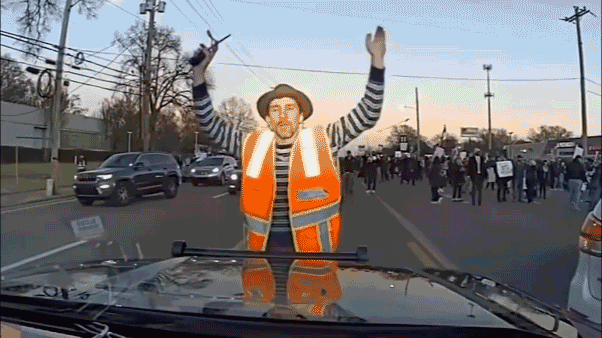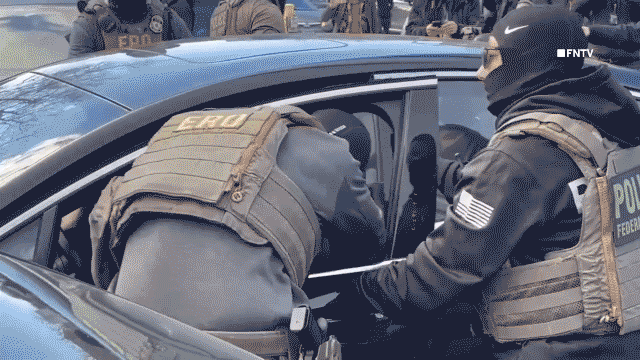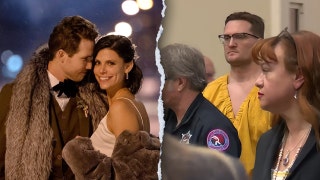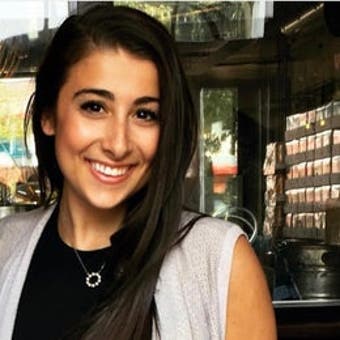Report: Summer riots and looting have cost upwards of $1 billion in damages
Seattle business owner and co-founder of Buki Joey Rodolfo on the price of rioting.
Protests and riots ravaged parts of the nation in the days, weeks and months following the death of George Floyd in Minneapolis.
Floyd, 46, died on May 25 after a White Minneapolis police officer was seen on video holding his knee on Floyd’s neck for several minutes despite his shouts that he couldn’t breathe. The video went viral and people took to the streets to protest police brutality and systemic racism.
Floyd’s death also highlighted a number of other Black people who were killed at the hands of White individuals or police officers. Ahmaud Arbery, 25, was fatally shot while out jogging in a Georgia neighborhood on Feb. 23 when a group of White men shot and killed him after allegedly suspecting he was a burglar. The shooting was caught on video.
Breonna Taylor, 26, was fatally shot inside her Louisville, Ky., home in March by police who were conducting a raid at the home as part of a narcotics investigation connected to her ex-boyfriend. Taylor, a medical worker who was studying to become a nurse, was shot multiple times and pronounced dead at the scene. No drugs were found inside her home.
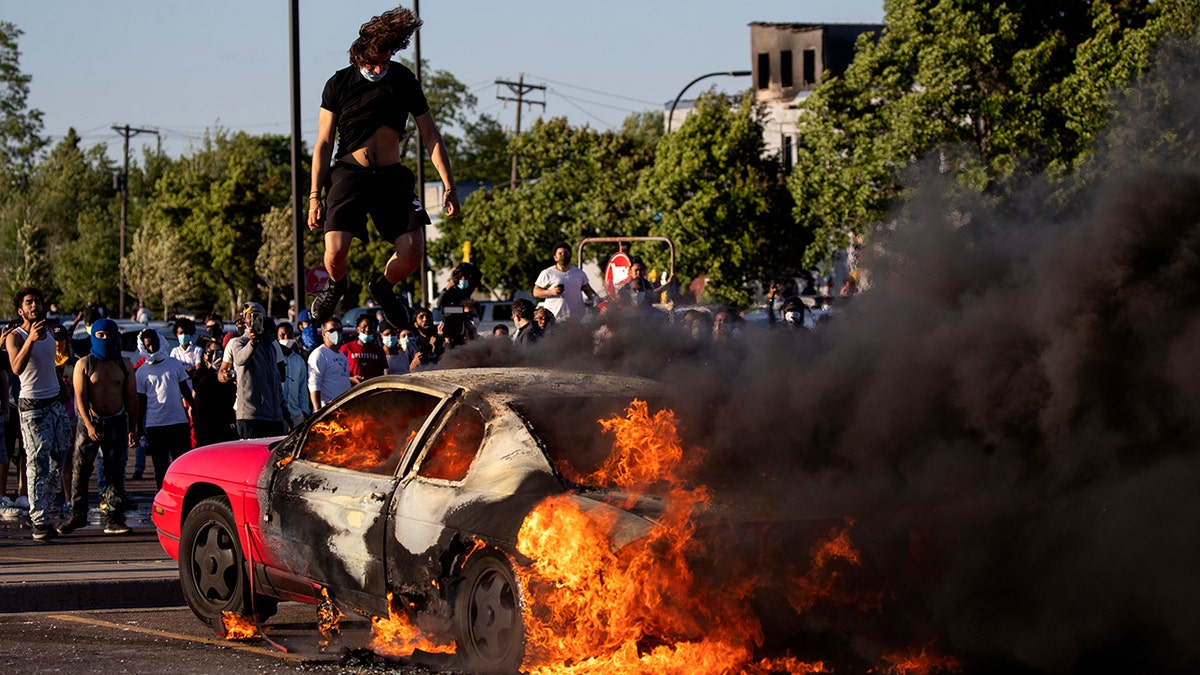
A car burns in a Target parking lot Thursday, May 28, 2020, in Minneapolis. (Carlos Gonzalez/Star Tribune via AP)
Many protests have revolved around the push for police to be defunded, with demonstrators arguing that money meant for those departments should be reallocated to programs that benefit communities of color.
The demonstrations that followed Floyd’s death at times devolved into riots that often included looting, violence and destruction. In one case, protests carried on for more than 100 days.
Here’s a look at some of the U.S. cities that saw the biggest protests or riots in 2020.
MINNEAPOLIS, MINN.
News of Floyd’s death sent shockwaves throughout the city and prompted demonstrations that, although peaceful by some, grew destructive in some cases. Fires erupted throughout parts of the city, including at a local Auto Zone, a Japanese restaurant, a Wells Fargo bank and an Office Depot. Looters ransacked an area Target store, among other shops.
At one point, rioters cheered as people set a Minneapolis police precinct headquarters on fire after the department was forced to abandon it.
The staff had evacuated the 3rd Precinct station, the focus of many of the protests, "in the interest of the safety of our personnel," a police spokesperson said at the time.
Livestreamed video showed protesters entering the building where fire alarms blared and sprinklers ran as blazes were set.
The city of Minneapolis later announced plans to spend $4.8 million to temporarily rent an office building and adapt it to replace the police station.
NEW YORK
NEW YORK CITY
New York City also saw peaceful protests that grew violent or destructive in the days and nights following Floyd’s death. From the end of May into the beginning of June, businesses boarded up as some people took out their anger on storefronts – or took advantage of the opportunity to loot.
But for some businesses, it was too late. In one of the most notable instances, Manhattan’s SoHo neighborhood saw mobs rampage down the sidewalks, smashing into numerous luxury shops to steal merchandise. Hundreds of people marauded through the area, breaking into Rolex, Chanel and Prada boutiques as well as clothing and electronics stores.
The spurts of smash-and-grab sprees and sporadic unrest led New York City officials to impose a citywide curfew for several days, which led to clashes between protesters and police officers attempting to clear the streets.
In one instance, the New York Police Department was seen in videos and photos shared on social media using a tactic called "kettling," corralling protesters who had made their way onto the Manhattan Bridge and blocking off both ends of the bridge. The use of the tactic and other examples of alleged police department aggression against protesters were heavily criticized by public watchdog and civil rights groups.
In December, the New York City Department of Investigation said in a report that the NYPD was caught off guard by the size of the Floyd protests and resorted to aggressive disorder control methods that stoked tensions and stifled free speech.
It criticized tactics that included the kettling, as well as making mass arrests, using pepper spray and batons, and detaining protesters for hours. Too few officers were deployed early in the demonstrations, the report said.
ROCHESTER, N.Y.
Elsewhere in the state, Rochester residents took to the streets in protest of the police treatment of a Black man named Daniel Prude.
Prude, 41, died roughly one week after his encounter with police on March 23, but his name and death did not become national news until September when a video of the incident was made public by his family.
Prude was handcuffed by police around 3:20 a.m. the day after his brother called police to take him to the hospital.
Police located Prude soon after he allegedly went to a phone store where police believe he "threw a cinder block through the store window before being spotted by a tow truck driver." Police said the tow truck driver described Prude as being naked and covered in blood, and said he had told the driver he had the coronavirus.
Footage shows Prude naked and sitting in the street wearing a mesh covering, known as a spit hood, over his head. Over the course of the interaction, one officer can be seen pressing his knee to Prude’s back while another pushes his face to the pavement. They allegedly held Prude down for approximately two minutes, but they later realized he didn't have a pulse and began CPR.
He was taken off life support on March 30. A medical examiner concluded that Prude’s death was a homicide caused by "complications of asphyxia in the setting of physical restraint." The report lists excited delirium and acute intoxication by phencyclidine, or PCP, as contributing factors.
Rochester's former police chief and the mayor have been publicly squabbling over the handling of Prude's death.
In the days that followed news of Prude’s arrest and his subsequent death, protesters painted the streets in parts of the city with words such as "murderer" and "resign." Others sat naked or topless outside city buildings wearing hoods over their heads to imitate the way in which Prude was arrested.
Police were criticized for firing off pepper balls at close range and hitting people, although they later defended their actions by saying they only did so because a protester set off a firework.
One man was accused of striking a police officer in the head with a makeshift wooden shield, while another man allegedly threw a "mortar-style, commercial grade" firework at a line of police officers.
PORTLAND, ORE.
Oregon’s largest city saw more than 100 consecutive nights of racial injustice protests marred by vandalism and chaos and, at times, violence.
The demonstrations that started in late May divided residents and flared even further in July when President Trump deployed federal law enforcement agents to stop attacks on a federal courthouse and other U.S. property.
Thousands of demonstrators turned out nightly, with some hurling fireworks, rocks, ball bearings and bottles at the agents. They responded with huge plumes of tear gas, rubber bullets and flash-bang grenades that created chaotic, war zone-like scenes.
Those clashes with federal agents ended July 31, when state police took over from U.S. agents under a deal brokered by Gov. Kate Brown and the U.S. Department of Homeland Security. But smaller protests continued, with groups of 100 to 200 people marching nightly.
Protesters called for city officials to slash the police budget and reallocate that money to Black residents and businesses. Some also called for the resignation of Mayor Ted Wheeler.
During the clashes, some broke windows, set small fires, punctured police car tires with spikes, shined lasers in officers’ eyes and pelted them with rocks and frozen water bottles.
In mid-August, protesters were seen on video punching and kicking a man to the ground after he crashed his truck onto the sidewalk.
Video posted online of the incident showed the man sitting in the street next to the truck. A crowd gathered around him and repeatedly punched and kicked him in the head until he was bloody.
Witnesses told police the man had been helping a transgender woman who had an item of hers stolen before he got into his truck and drove off. He sped away as protesters, some of whom were in the street, could be seen on video kicking his car. After crashing, he was dragged out of the car and beaten by nine or 10 people. When police arrived the man was unconscious. He later recovered from his injuries.
Tensions reached a new high at the end of that month, when a pro-Trump caravan motored into downtown, with some shooting paintballs and spraying bear repellent at Black Lives Matter protesters who tried to block the streets.
Fistfights broke out and, as night fell, Trump supporter Aaron "Jay" Danielson, 39, was fatally shot as he walked on a sidewalk. Michael Forest Reinoehl, the suspected shooter, was later killed by a law enforcement task force sent to arrest him outside Lacey, Wash.
CHICAGO, ILL.
With tensions already heightened following the Floyd shooting, hundreds, if not thousands of people descended on downtown Chicago in August following a police shooting on the city’s South Side.
Vandals smashed the windows of a dozen businesses and made off with merchandise, cash machines and virtually anything else they could carry, police said.
Police Superintendent David Brown told reporters that the shooting of the man who had opened fire on officers apparently prompted a social media post that urged people to form a car caravan and converge on the business and shopping district.
"Car caravans" of looters made their way into Chicago’s Magnificent Mile, Gold Coast and Irving North neighborhoods and neighboring commercial districts, Brown said.
Over several hours, police made more than 100 arrests and 13 officers were injured, including one who was struck in the head with a bottle, Brown said.
Brown dismissed any suggestion that the chaos was part of an organized protest of the shooting, calling it "pure criminality" that included occupants in a vehicle who opened fire on police who were arresting a man they spotted carrying a cash register.
CHICAGO LOOTING VIDEOS SPREAD ON SOCIAL MEDIA: SEE THE FOOTAGE
Videos of the vandalism showed huge crowds of people smashing their way into businesses and streaming out of the broken windows and doors with clothes and other merchandise. They loaded up vehicles, some moving slowly and deliberately, apparently not worried about being caught by police or being recorded by scores of cellphone cameras.
Vehicles drove away slowly, some leaving behind boxes of rocks that they had apparently brought to shatter the windows. Cash register drawers and clothes hangers were strewn about the streets, along with ATMs that had been ripped from walls or pulled from inside businesses.
Stores miles from downtown were also ransacked, their parking lots littered with glass and boxes that once contained television sets and other electronics.
Weeks earlier in July, a downtown Chicago protest over a statue of Christopher Columbus devolved into a chaotic scene of police swinging batons and demonstrators hurling frozen water bottles, fireworks and other projectiles at officers.
KENOSHA, WISC.
Protests erupted in August following the police shooting of Jacob Blake, a Black man shot multiple times in Kenosha while three of his children looked on.
Blake’s shooting was caught on video by a man who reportedly said he saw Blake scuffling with three officers and heard them yell, "Drop the knife! Drop the knife!" before the gunfire erupted.
In the footage, Blake walks from the sidewalk around the front of his SUV to his driver-side door as officers follow him with their guns drawn and shout at him. As Blake opens the door and leans into the SUV, an officer grabs his shirt from behind and opens fire. Seven shots can be heard in the footage.
Blake’s family later revealed he was paralyzed as a result of the shooting.
The shooting sparked protests over racial injustice in several cities, which devolved into unrest and full-on riots.
Crowds destroyed dozens of buildings and set more than 30 fires in downtown Kenosha. In one instance, a Kenosha car dealership reportedly sustained $1.5 million in damage during one night of riots.
DAMAGE BLAMED ON RIOTING IN KENOSHA TOPS $50 MILLION, COUNTY ASKS FOR FEDERAL HELP TO REBUILD
Tensions flared further when a 17-year-old was accused of killing two protesters just days after Blake was shot.
Kyle Rittenhouse was charged with first-degree intentional homicide in the killing of two protesters and attempted intentional homicide in the wounding of a third. He also faces a misdemeanor charge of underage firearm possession for wielding a semiautomatic rifle.
The charges against Rittenhouse stem from a series of alleged shootings on the night of Aug. 25, when Rittenhouse was in Kenosha with a friend and told the Daily Caller’s Richie McGinniss he was there that night to protect a business that he was seen standing near and also "to help people."
According to prosecutors and court documents, Rittenhouse shot and killed 36-year-old Joseph Rosenbaum, of Kenosha, after Rosenbaum threw a plastic bag at Rittenhouse, missing him, and tried to wrestle his rifle away.
While trying to get away in the immediate aftermath, Rittenhouse was captured on cellphone video saying, "I just killed somebody." According to the complaint filed by prosecutors, someone in the crowd said, "Beat him up!" and another yelled, "Get him! Get that dude!"
KENOSHA OFFICER REPORTEDLY HIT WITH BRICK DURING OVERNIGHT PROTESTS
Video shows that Rittenhouse tripped in the street. As he was on the ground, 26-year-old Anthony Huber, of Silver Lake, hit him with a skateboard and tried to take his rifle. Rittenhouse opened fire, killing Huber and wounding Gaige Grosskreutz, of West Allis, who was holding a handgun.
Cellphone video that captured some of the action shows that right after the shootings, Rittenhouse walked slowly toward a police vehicle with his hands up, only to be waved through by police.
He returned to his Illinois home and turned himself in soon after. Police later blamed the chaotic conditions for why they didn’t arrest Rittenhouse at the scene.
His attorneys and family have insisted Rittenhouse was only defending himself when he fired the gun, which belonged to a friend.
Speaking to Fox News in October, Rittenhouse’s mother, Wendy said: "If he didn't have that gun, he would've been dead."
PHILADELPHIA, PA.
Demonstrators took to the streets of Philadelphia following the October officer-involved shooting of Walter Wallace Jr., an armed Black man reportedly with a mental health history.
More than a thousand people took to the streets following the shooting, ransacking big-name stores, such as Walmart and Foot Locker, as well as smaller businesses. Hundreds were arrested, and dozens of police and law enforcement vehicles were damaged during the riots, officials said at the time.
Meanwhile, more than 50 police officers were injured, including a sergeant who was "intentionally run over" by a pick-up truck driver, Philadelphia Police Commissioner Danielle Outlaw said.
Wallace’s family has said he was experiencing a mental health crisis when police were called.
Officers who arrived at the scene fired 14 shots after Wallace advanced toward the officers despite their orders that he drop the knife. The shooting was caught on video.
CLICK HERE TO GET THE FOX NEWS APP
Neither officer was equipped with a Taser or any sort of electric energy device at the time.
The Associated Press contributed to this report.



